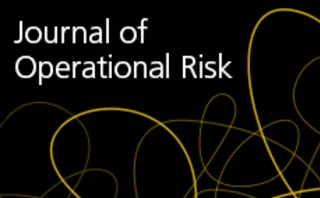Risk measurement
Top 10 op risks: Why cyber risk looms larger than its losses
Fast-moving threat landscape and increased supplier concentration keep infosec top of the table
For G-Sibs managing cyber outages, confidence makes the difference
IT disruption drops among top G-Sib concerns this year, as banks revamp models and retool risk indicators
Study finds just 10 banks plan to apply for FRTB models
Research provides extra insight on reasons for decline in internal models
A study of China’s financial market risks in the context of Covid-19, based on a rolling generalized autoregressive score model using the asymmetric Laplace distribution
The authors construct a risk measurement model for the financial market during the Covid-19 pandemic, using data from the Shanghai Stock Exchange for empirical analysis.
BofA, Citi, JPM slash $18trn of derivatives in latest window dressing effort
Systemic indicator reduction in Q4 keeps lid on trio’s capital surcharges
How to choose the dependence types in operational risk measurement? A method considering strength, sensitivity and simplicity
The authors put forward a method for banks to choose the most appropriate dependence type based on an empirical analysis of the Chinese Operational Loss Database.
Banks begin tackling climate stress tests of trading books
Market risk professionals see major shortcomings in available scenarios
Cyber risk definition and classification for financial risk management
The authors put forward a definition and classification scheme for cyber risk than can be used as a template for data collection by financial institutions.
A theory for combinations of risk measures
This paper investigates combinations of risk measures under no restrictive assumption on the set of alternatives, obtaining results regarding the preservation of properties and acceptance sets for these combinations of risk measures.
Key impact deep dive (KIDD)
This paper proposes a KIDD (key impact deep dive) approach for assessing extreme risks based on assessing key impact types.
A new metric for liquidity add-ons: easy as ADV, but better
Proposed measure allows brokers to calculate stable, stock-specific liquidity add-ons
Nonconvex noncash risk measures
This paper looks at nonconvex, noncash risk measures with p-norm (1 ≤ p ≤ ∞) for nonweak cone-type acceptable sets.
Building forward-looking scenarios: why you’re doing it wrong
Rick Bookstaber and colleagues describe a process for constructing effective scenarios
New SEC derivatives rule – What mutual fund managers need to know about risk and regulations
The US Securities and Exchange Commission has adopted Rule 18f-4, which requires registered funds and business development companies to implement a robust regulatory framework for derivatives use. This webinar provides a comprehensive overview of the new…
A sea change – Driving awareness to confront climate risk
Amid a global push towards green policies, the reality of overhauling how industries worth trillions of dollars operate is causing concern. A forum of market participants and sponsors of this report discuss the levels of awareness of climate risk and its…
Operational uncertainty – An unavoidable challenge
The transition from Libor to a new risk-free rate has revealed a number of challenges for all financial markets participants – the nature and scope of what lies ahead is vast, impacting businesses, operations and support functions. KPMG‘s global Libor…
Risk capital reserve and measurement precision in modeling heavy-tailed single operational losses
This paper provides a rationale for adopting quantitative buffer capital, designed to absorb variations due to measurement errors, especially those originating from the estimation risk.
When the data’s not there, expert-led models could help
Missing data is a problem. Expert elicitation taps the knowledge of many, say consultants
Industry to take up Fed’s white paper on cyber risk
Workshop will delve into definitions and classifications of the most chameleon of risks
Climate change spells death of certainty
Global warming threatens to upend everything risk models take for granted
Model risk management: from epistemology to corporate governance
In this paper, the authors conduct an analysis of model risk in an attempt to understand the main issues that lead to failures and the best way to address such issues.
















